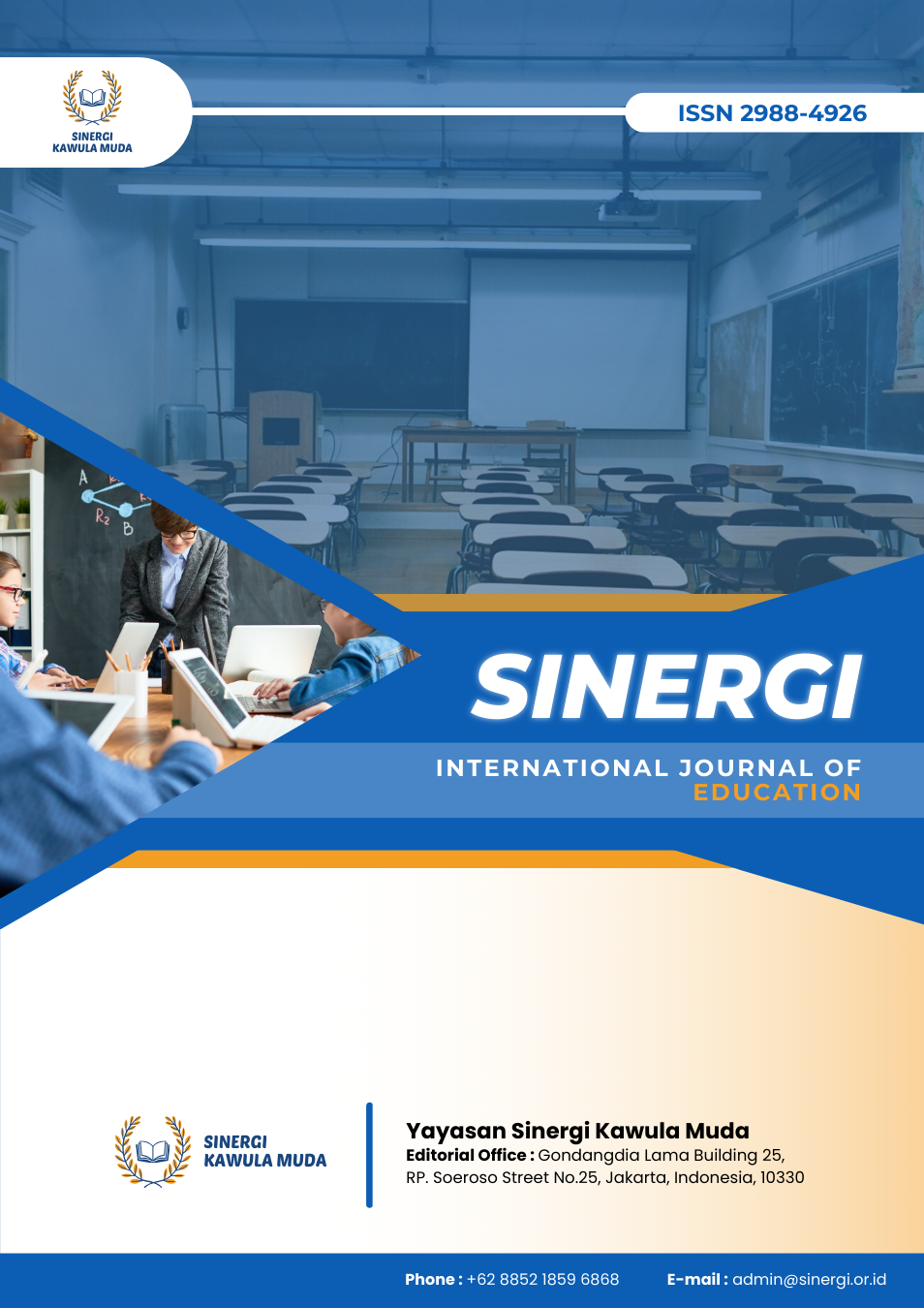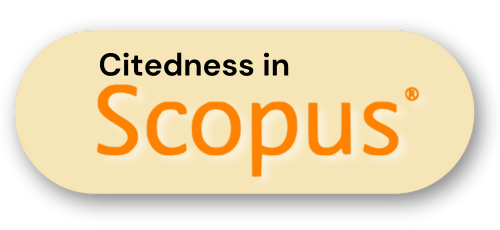Increasing Children's Religious Values Through Method of Storying Stories of Islamic Figures in Group B Children
DOI:
https://doi.org/10.61194/education.v3i2.765Keywords:
Storytelling Methods, Stories of Islamic Figures, Children's Religious ValuesAbstract
This research aimed to determine whether the method of telling the stories of Islamic figures could increase the value of religiosity in group B at TK Aisyiyah Bustanul Athfal Tombiobong. The subjects in this study are group B children of Aisyiyah Bustanul Athfal Kindergarten aged 5-6 years, totaling 10 students, consisting of 3 male students and seven female students. This is a classroom action research that was carried out in two cycles. Each cycle consists of two meetings. Each cycle of learning activities consists of 4 stages: planning, implementing, observing, and reflecting. The data collection techniques in this study are observation sheets, interviews, and documentation. The data analysis technique uses descriptive analysis, which is both quantitative and qualitative. The overall assessment of students during the pre-action with three aspects, knowing God through his creation, getting used to worship, and behaving politely and politely, shows the average value of children's religiosity in the developing category (MB) 44.2%. Then in the first cycle of the first meeting, the average value of children's religiosity in the starting to develop (MB) category was 50%. In cycle I of the second meeting, the value of children's religiosity was developing according to expectations (BSH) 63.27%. At the first meeting of cycle II, it was still in the developing category as expected (BSH) at 72.5%. Then at the second meeting of cycle II, it became very well developed (BSB) at 84.2%. There was an increase from pre-action to cycle I of 19.07 and from cycle I to cycle II an increase of 20.93%. Based on the research above, it can be concluded that the method of telling stories of Islamic figures can be used to increase the religiosity value of children in group B at Aisyiyah Bustanul Athfal Tombiobong Kindergarten.
References
Adha, A. S., & others. (2021). Analysis of the relationship between maternal parenting patterns and the incidence of stunting among toddlers in Jeneponto district. Al Gizzai: Public Health Nutrition Journal, 71–82. DOI: https://doi.org/10.24252/algizzai.v1i2.21825
Arikunto, S., et al. (2018). Classroom Action Research. Jakarta: Earth of Letters.
Breakstone, J., McGrew, S., Smith, M., Ortega, T., & Wineburg, S. (2018). Why we need a new approach to teaching digital literacy. Phi Delta Kappan, 99(6), 27–32. https://doi.org/10.1177/0031721718762419 DOI: https://doi.org/10.1177/0031721718762419
Cahyadi, A., & Mualimin. (2014). Classroom Action Research Theory and Practice. Jakarta: Ganding Pustaka.
Choi, E., Choi, Y., & Park, N. (2022). Blockchain-centered educational program embodies and advances 2030 sustainable development goals. Sustainability, 14(7), 3761. https://doi.org/10.3390/su14073761 DOI: https://doi.org/10.3390/su14073761
Donate-Beby, B., García‐Peñalvo, F., & Amo, D. (2024). Data literacy questionnaire for educators. 1–6. https://doi.org/10.1109/siie63180.2024.10604607 DOI: https://doi.org/10.1109/SIIE63180.2024.10604607
Fadlillah, M., & Muhammad. (2013). Early Childhood Character Education. Yogyakarta: Ar-Ruzz Media.
Hadith narrated by Bukhari from Abu Hurairah RA No. 1296.
Hegestedt, R., Nouri, J., Rundquist, R., & Fors, U. (2023). Data-driven school improvement and data-literacy in K-12: Findings from a Swedish national program. International Journal of Emerging Technologies in Learning (iJET), 18(15), 189–208. https://doi.org/10.3991/ijet.v18i15.37241 DOI: https://doi.org/10.3991/ijet.v18i15.37241
Howard, P. (2015). Digital citizenship in the afterschool space: Implications for education for sustainable development. Journal of Teacher Education for Sustainability, 17(1), 23–34. https://doi.org/10.1515/jtes-2015-0002 DOI: https://doi.org/10.1515/jtes-2015-0002
Jalaluddin. (2012). Psychology of Religion. Jakarta: Rajawali Press.
Naufal, A. F. (2022). Parent education program to stimulate children’s growth and development in Pringapus Village. Community Service Webinar Proceedings, 181–187.
Purwanto. (2018). Techniques for Preparing Validity and Reliability Test Instruments for Sharia Economic Research. Magelang: Staial Press.
Qodariyah, L. (2017). Ethics in the Perspective of the Qur'an. Journal Al-Fath, 11(2).
Ramluggun, P., Lacy, M. L., Cadle, M., & Anjoyeb, M. (2018). Managing the demands of the preregistration mental health nursing programme: The views of students with mental health conditions. International Journal of Mental Health Nursing, 27(6), 1793–1804. https://doi.org/10.1111/inm.12486 DOI: https://doi.org/10.1111/inm.12486
Samadi, S. A., & McConkey, R. (2018). Perspectives on inclusive education of preschool children with autism spectrum disorders and other developmental disabilities in Iran. International Journal of Environmental Research and Public Health, 15(10), 2307. https://doi.org/10.3390/ijerph15102307 DOI: https://doi.org/10.3390/ijerph15102307
Sandvik, A., Eriksson, K., & Hilli, Y. (2014). Understanding and becoming – The heart of the matter in nurse education. Scandinavian Journal of Caring Sciences, 29(1), 62–72. https://doi.org/10.1111/scs.12128 DOI: https://doi.org/10.1111/scs.12128
Sousa, L. B., Kenneally, C., Golumbic, Y., Martin, J. M., Preston, C., Rutledge, P. J., & Motion, A. (2024). Teacher experiences and understanding of citizen science in Australian classrooms. Plos One, 19(11), e0312680. https://doi.org/10.1371/journal.pone.0312680 DOI: https://doi.org/10.1371/journal.pone.0312680
Suaidah, I. (2012). Worship in the Qur'an. Inspirational Journal, 1(1).
Wiyani, & Barwani. (2014). Formed PAUD. Yogyakarta: Ar Ruzz Media.






